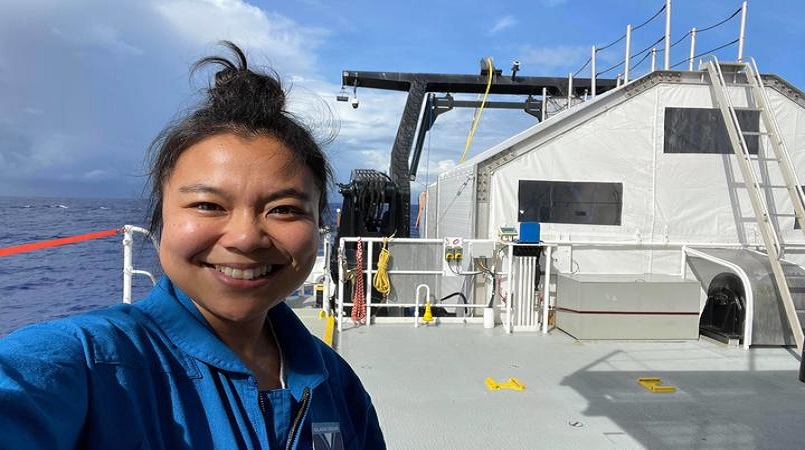
A PhD student from the Federated States of Micronesia has become the first person from her nation and one of the first in the world to explore the ocean floor in the southern end of the Marianas Trench.
Nicole Yamase, a PhD candidate in the University of Hawaii's Marine Biology Graduate Program, went to a depth of 10.7 km in the area known as the Western Pool of the Challenger Deep.
The location of the dive, which took place earlier this month, was about 320 kilometres southwest of Guam.
Yamase boarded the vessel DSSV Pressure Drop at Apra Harbor in Guam, which transported a submersible known as the Limiting Factor to the Marianas Trench location.
"The submersible was piloted by its owner, Victor Vescovo," Yamase said Tuesday after returning to Hawaii.
"It took us four hours to reach the bottom, two hours to explore the bottom, and four hours back up so a total of 10 hours underwater.
"We explored the eastern part of the Western Pool where, to their knowledge, no one has ever been to before."
Yamase said exploring and mapping the ocean floor in the Marianas Trench was a key part of protecting the health of the world's oceans.
"The work that Victor and his team are doing is very important for us to manage our marine resources and exclusive economic zone (EEZ) in general," said Yamase.
"The FSM's EEZ zone is huge!"
She pointed out that on previous mapping explorations to the bottom, "they have also discovered new species, and I am sure there are many more to be discovered. You cannot manage something you don't know about or don't know exists so that is why their work is crucial for us and our oceans."
The DSSV Pressure Drop vessel had the first of its kind multi-beam sonar that allowed the ship to map areas of the ocean that have never been visited before, she said, adding that "currently, only 20 percent of the seafloor is mapped."
"This expedition showed me how vast our ocean is. Even though not many people have accessed these depths before, our actions and activities still affect the environment down there. Everything is connected from the mountain tops to the deepest part of the ocean. We must do what we can to protect our waters."
The bottom area she saw at over 10,700 metres looked like an underwater desert, she said.
"The bottom was fine silt with scattered rocks," she said. "Although we did not see any life forms, previous dives have found thriving mats of bacteria on the rocks and sediment that were collected. I know many people were expecting us to see weird creatures, but they must understand that the ocean is vast and Victor and I are in the deepest place on Earth where there is no light so the chance of seeing something is very slim. There is the possibility that the lights from the sub scared them away if they were in the area."
Yamase, who is from Pohnpei, is studying for her post-graduate degree at the University of Hawaii.
"My research focus is on the effects of climate change on the marine plant community," she said.
"Specifically, I measure their response in terms of photosynthesis and growth under the predicted climate change conditions. Understanding how they respond will give us an idea of how our future reefs will look like, which will help us manage and protect our reefs."
Yamase said she hoped young Pacific islanders would look at her and see themselves and opportunities that were out in the world to be explored.
"I hope young Pacific Islanders will also be more excited about science," she said. "I know it's intimidating with all the math and science courses, but if you have the right mentorship, resources, and support, you can accomplish anything. We really need more local students in STEM (science, technology, engineering and math) fields to serve as role models for the next generations and leaders of tomorrow."
Photo: RNZ Pacific / Giff Johnson Caption: Nicole Yamase on the deck of the DSSV Pressure Drop
